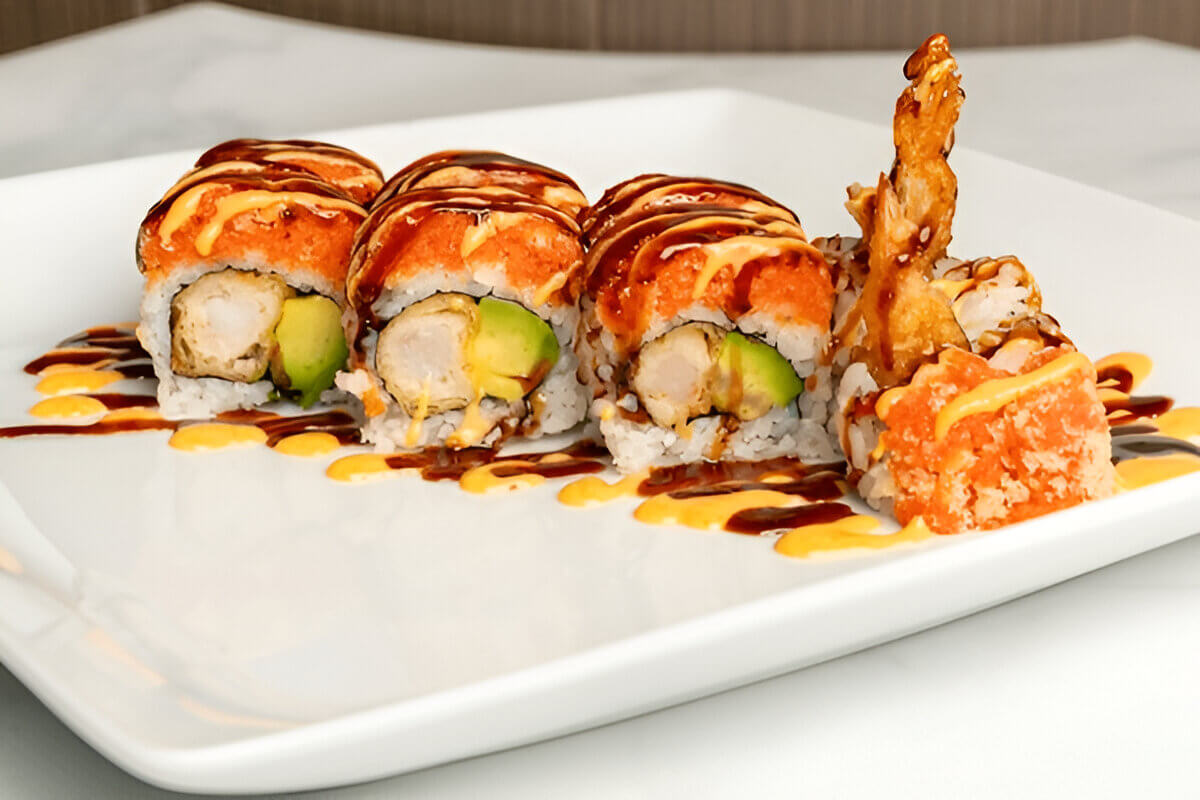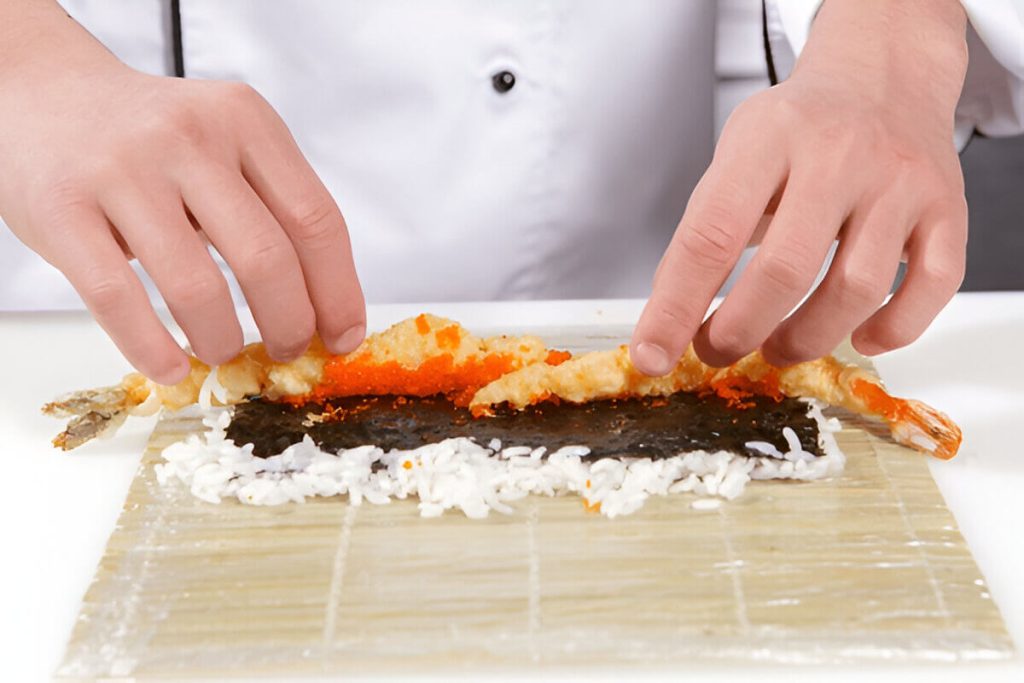
If you want to recreate a shrimp tempura roll at home, this guide covers the essentials: ingredients, tools, unique features, rolling techniques, and troubleshooting. With step-by-step instructions and creative variations, both beginners and experienced cooks can enjoy authentic Japanese flavors in their kitchen. I’d like you to please discover the satisfaction of making restaurant-quality shrimp tempura rolls at home.
Essential Ingredients and Tools You Need for a Perfect Shrimp Tempura Roll
Creating the perfect shrimp tempura roll is a delightful culinary adventure that combines texture, flavor, and technique. To begin, you need to gather the essential ingredients and tools that will ensure your sushi-making experience is both enjoyable and successful.
First and foremost, let’s talk about the shrimp tempura ingredients. Fresh shrimp are the stars of this dish, opt for medium-sized shrimp that are peeled and deveined. The key to achieving a crispy coating lies in the tempura batter recipe. A classic tempura batter consists of cold water, all-purpose flour, and a touch of cornstarch for extra crispness. Be sure to keep your batter cold until you’re ready to fry, as this helps create a light, airy texture.
Next up is sushi rice preparation. Sushi rice serves as the foundation for your roll and must be cooked correctly to achieve its signature stickiness. Begin by rinsing short-grain white rice until the water runs clear; this removes excess starch. Cook it according to package instructions or in a rice cooker for convenience. Once cooked, season it with a mixture of rice vinegar, sugar, and salt while it’s still warm, this gives sushi rice its distinctive flavor.
You’ll need some essential tools like a bamboo sushi rolling mat (makisu) to shape your rolls perfectly. Place a sheet of nori on the mat before adding layers of prepared sushi rice followed by crispy shrimp tempura in the center.
Step-by-Step Guide How to Make Shrimp Tempura from Scratch

Making shrimp tempura from scratch is a rewarding culinary experience that results in a deliciously crispy dish. Follow this step-by-step guide to create your own easy shrimp tempura recipe at home.
Step 1: Prepare the Shrimp
Start by selecting fresh, large shrimp for the best results. Peel and devein the shrimp, leaving the tails intact for easy handling. To ensure even cooking and prevent curling during frying, make small incisions along the underside of each shrimp.
Step 2: Make the Homemade Tempura Batter
The key to light and crispy tempura lies in its batter. For a classic homemade tempura batter, you’ll need cold ingredients—this helps achieve that desirable crispiness. Mix one cup of all-purpose flour with one cup of ice-cold water and an egg yolk. Gently combine these ingredients, being careful not to overmix; some lumps are okay as they contribute to texture.
Step 3: Heat the Oil
Fill a deep pot with vegetable oil or any neutral oil suitable for frying, such as canola or sunflower oil. Heat it to about 350°F (175°C). Maintaining this temperature is crucial for achieving perfectly fried shrimp without becoming greasy.
Step 4: Frying Shrimp Tips
Once your oil reaches the desired temperature, it’s time to fry! Dip each prepared shrimp into your homemade tempura batter, ensuring it’s evenly coated but not overly thick. Carefully lower each battered shrimp into the hot oil using tongs or chopsticks. Fry in small batches to avoid overcrowding and ensure consistent cooking.
Step 5: Crispy Tempura Tips
Fry each batch of shrimp until they turn golden brown and crispy, usually about two minutes per side. Use a slotted spoon or spider strainer to remove them from the oil and place them on paper towels to drain excess grease.
Serve your freshly made shrimp tempura immediately with dipping sauce like soy sauce or tentsuyu for an authentic touch. With these steps and tips in mind, you’ll master making restaurant-quality crispy tempura right in your own kitchen!
Rolling Techniques (Assembling Your Shrimp Tempura Roll with Ease)
Creating a perfect shrimp tempura roll at home can be a rewarding experience, and mastering the sushi rolling technique is key to achieving that restaurant-quality presentation. To start, gather your ingredients: freshly cooked shrimp tempura, seasoned sushi rice, nori sheets, and your favorite fillings such as cucumber or avocado.
Begin by laying a bamboo sushi mat on a flat surface and placing a sheet of plastic wrap over it to prevent sticking. Place the nori sheet on top with the rough side facing upwards. Wet your hands slightly to handle the sticky rice more easily, and spread an even layer of rice over the nori, leaving about an inch at the top edge clear for sealing.
Next comes arranging your fillings. Lay the shrimp tempura horizontally across the center of the rice along with any additional ingredients you’ve chosen. Now for the crucial part: rolling. Lift the edge of the mat closest to you with both thumbs while holding down your fillings with your fingers. Roll it forward gently yet firmly until you cover all fillings and reach that clear edge of nori.
Finally, give it one more firm squeeze along its length to ensure everything holds together nicely before unwrapping from plastic wrap and mat. Use a sharp knife moistened with water to slice through without squashing your beautifully assembled roll.
These steps offer not just guidance but also confidence in making sushi at home—an artful endeavor that’s easier than it seems when equipped with these practical tips!
Tasty Variations and Serving Suggestions for Your Shrimp Tempura Rolls
Shrimp tempura rolls are a beloved staple in the world of sushi, known for their delightful combination of crispy shrimp and seasoned rice. However, there’s always room to elevate this classic dish with some tasty variations and creative serving suggestions.
When it comes to sushi roll variations, consider adding a layer of avocado or cucumber for added texture and flavor. For those who enjoy a touch of spice, incorporating spicy mayo or sriracha into the roll can provide an exciting kick. Another popular variation is the addition of cream cheese, which offers a creamy contrast to the crunchy shrimp.
Serving suggestions for shrimp rolls can enhance your dining experience as well. Presenting them with a side of pickled ginger not only cleanses the palate but also adds a burst of tangy flavor between bites. A sprinkle of sesame seeds on top can add an aromatic touch that complements the overall taste profile.
Finally, dipping sauces for shrimp tempura rolls are essential for those who love to experiment with flavors. Traditional soy sauce is always a safe choice, but you might also try ponzu sauce for its citrusy notes or eel sauce if you prefer something sweet and savory. For an extra layer of heat, wasabi-infused soy sauce can be an adventurous option.
Troubleshooting Common Issues When Cooking Shrimp Tempura Rolls
When it comes to crafting the perfect shrimp tempura roll, a few common issues can arise that may hinder your sushi-making experience. However, with the right solutions, you can overcome these challenges and create delicious rolls every time.
One frequent problem is dealing with soggy tempura batter. To fix this, ensure your batter is cold before frying. The contrast between hot oil and cold batter creates a crispy texture. Additionally, avoid overcrowding the frying pan as this can lower the oil’s temperature and result in sogginess.
Another key aspect of successful sushi is perfecting your rice texture. If your sushi rice turns out too mushy or dry, consider adjusting the water-to-rice ratio during cooking. Rinse the rice thoroughly before cooking to remove excess starch and use a rice cooker for consistent results. Once cooked, season it with a mixture of rice vinegar, sugar, and salt while it’s still warm to enhance flavor without compromising texture.
By addressing these sushi making problems with targeted solutions, you can elevate your shrimp tempura rolls from ordinary to extraordinary.